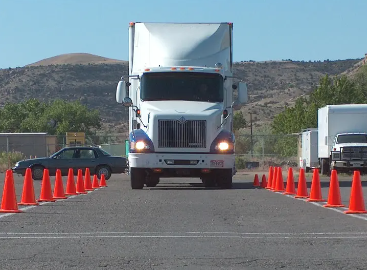Jan 26
Unlocking the Potential of Commercial Driving: A Deep Dive into ELDT Training
Introduction
In the fast-evolving landscape of commercial transportation, driving safety and proficiency are more crucial than ever. This is where Entry-Level Driver Training (ELDT) plays a pivotal role, setting the foundation for a new generation of commercial drivers. In this extensive guide, we will explore every aspect of ELDT training, its significance, comprehensive benefits, and its transformative impact on the entire transportation industry.
Understanding ELDT Training
ELDT stands for Entry-Level Driver Training, a mandated program for individuals aiming to acquire a commercial driver’s license (CDL) for the first time. This training is designed to equip new drivers with essential skills and knowledge for the safe and efficient operation of commercial vehicles, thus shaping the future of road safety and transportation standards.
Key Components of ELDT Training
- Theory Instruction: This covers general knowledge about truck operations, road safety, and regulations. Subjects include vehicle inspection, basic control of the vehicle, and non-driving activities like hours of service.
- Behind-the-Wheel Training: Practical, hands-on experience is provided, focusing on vehicle control and on-road driving. Trainees learn about backing maneuvers, vehicle inspection, and driving in different conditions.

The Importance of ELDT Training
ELDT training is crucial for several key reasons:
- Improving Road Safety: By providing comprehensive safety training, ELDT significantly reduces the risk of accidents, ensuring safer roads for all users.
- Ensuring Regulatory Compliance: Staying compliant with the Federal Motor Carrier Safety Administration (FMCSA) regulations is vital for legal and responsible operation in the transportation sector.
- Facilitating Career Progression: This training opens up opportunities for professional development and higher employment prospects in the commercial driving field.
The Wide-Ranging Benefits of ELDT Training
Benefits for Drivers
- Comprehensive Skill Development: ELDT training offers an all-encompassing learning experience, combining theoretical knowledge with practical skills, thus preparing drivers for a range of scenarios on the road.
- Career Advancement: With ELDT certification, drivers often find themselves in a position to access better job opportunities, potentially leading to increased earnings and job security.
Benefits for Employers
- Minimizing Risk: Well-trained drivers mean a significant reduction in accidents, which translates to lower operational risks and liabilities for the company.
- Enhancing Company Reputation: Companies that invest in comprehensive driver training are seen as more responsible, reliable, and committed to safety, improving their standing in the industry.
Deep Dive into the ELDT Curriculum
Theoretical Learning
- Fundamentals of Vehicle Operation: Detailed insights into various vehicle types, their mechanisms, controls, and basic operation techniques.
- Advanced Safety Protocols: Intensive training on handling emergencies, hazardous materials, and implementing advanced safety measures.
- In-depth Regulatory Knowledge: A thorough understanding of FMCSA regulations, including hours of service rules, logbook requirements, and compliance standards.
Practical Driving Experience
- Controlled Environment Training: Mastery of basic and advanced driving maneuvers in a safe, controlled setting.
- Real-Life Driving: Gaining confidence and proficiency in driving on highways, busy city roads, and in a variety of traffic and weather conditions.

Comprehensive ELDT Training Specifications
- Duration and Intensity: The training program is extensive, often spanning several weeks to months, designed to cover every aspect of commercial driving thoroughly.
- Evaluation Criteria: To achieve ELDT certification, trainees must pass rigorous theoretical and practical assessments, proving their mastery of the skills and knowledge imparted during the training.
Implementing ELDT Training in Your Organization
For transportation companies, implementing ELDT training can be a game-changer. It’s crucial to choose a training program that is comprehensive, up-to-date, and compliant with FMCSA regulations.
FAQs about ELDT Training
How long does ELDT training typically take?
The duration varies depending on the program and individual progress, but it generally takes several weeks to complete.
Is ELDT training mandatory for all commercial drivers?
ELDT training is mandatory for individuals obtaining their CDL for the first time, upgrading their license, or seeking specific endorsements.
Can I complete ELDT training online?
The theoretical part of ELDT training can often be completed online, but the practical, behind-the-wheel training must be done in person.
What happens if I don’t complete ELDT training?
Without completing ELDT training, you cannot legally obtain a CDL or the specific endorsements, limiting your employment opportunities in commercial driving.
Are there any exemptions to ELDT training?
Certain exceptions apply, such as for military drivers with equivalent experience. However, most commercial drivers must complete ELDT training.
What are the prerequisites for enrolling in ELDT training?
Prerequisites typically include having a valid driver's license and meeting certain age and health requirements. Specific prerequisites may vary depending on the training provider and the type of CDL being pursued.
How does ELDT training address the issue of driver fatigue?
ELDT training includes comprehensive modules on health and wellness, with a focus on managing driver fatigue, understanding hours of service regulations, and adopting healthy lifestyle practices.
Are there online resources available to supplement in-person ELDT training?
Yes, many providers offer online resources such as e-books, instructional videos, and interactive modules to complement in-person training sessions.
How does ELDT training prepare drivers for emergency situations?
The training includes emergency response techniques, first-aid basics, and protocols for handling unforeseen road situations, ensuring drivers are prepared for a variety of emergencies.
Is there a standard curriculum for ELDT training, or does it vary by state or provider?
While there is a standard framework set by the FMCSA, the specific curriculum can vary slightly by state or provider, ensuring it meets local regulations and industry needs.
Conclusion
ELDT training is a critical component in shaping the future of commercial driving, ensuring higher safety standards, regulatory compliance, and professional development in the transportation industry. For aspiring drivers and transportation companies alike, investing in comprehensive ELDT training is a strategic decision, leading to safer roads, enhanced career opportunities, and improved operational efficiency.
Who we are
Online Traffic Safety is at the forefront of delivering up-to-date and effective traffic safety training. We believe that informed drivers are safe drivers, and our goal is to equip every individual with the knowledge and skills needed to navigate the roads confidently and safely.
Featured links
-
Courses
-
About us
-
Partner with us
-
FAQs
Get in touch
-
info@onlinetrafficsafety.com
Connect with us
-
Facebook
-
Twitter
-
Youtube
-
Instagram
-
Linkedin
-
TikTok
Online Traffic Safety © 2024
